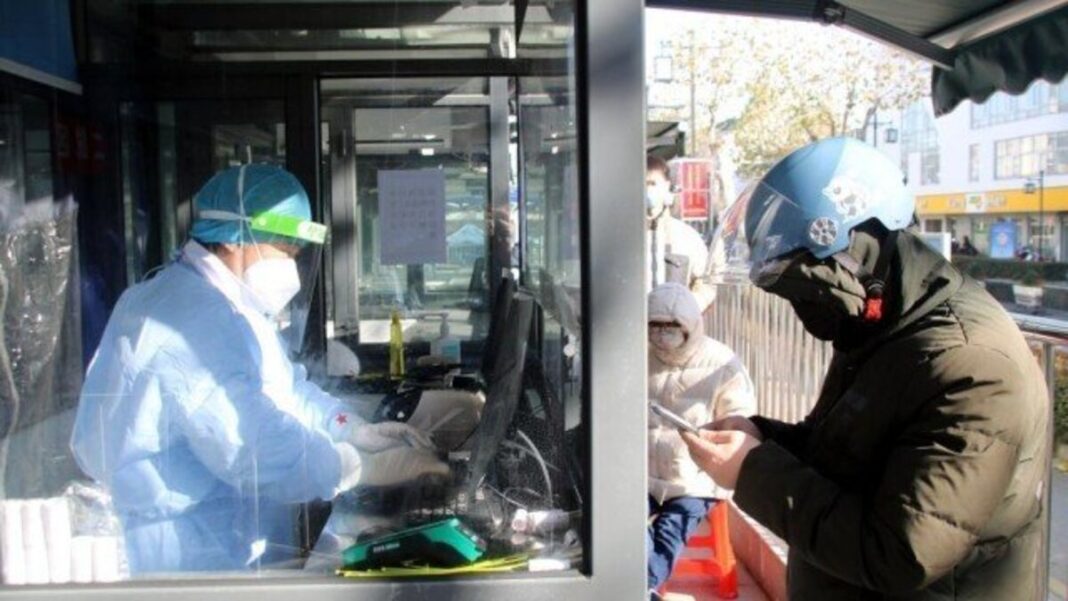CHINA: Beijing faces a massive surge in severe COVID-19 cases over the next two weeks after the government eased the “zero COVID policy” curbs a few weeks ago, resulting in overwhelming hospitals in big cities like Shanghai and Beijing.
“Over 60% of China’s and 10% of the Earth’s population will likely be infected within the next 90 days,” and “the deaths will likely be in the millions,” warned Eric Feigl-Ding, an epidemiologist and health economist.
“This is just the start,” Feigl-Ding tweeted while posting a video from a hospital showing dead bodies packed in rooms and hallways.
Several reports indicate that crematoria intended for COVID victims have once again been inundated with the dead, evoking sights similar to the virus’s initial onslaught.
The epidemiologist also stated that cremations are ongoing in Beijing and warned of overcrowded mortuaries. “24/7 funerals… 2,000 bodies backlogged for cremations.” Sound familiar? “It is spring 2020 all over again—but this time for China, emulating a more Western-style mass infection approach,” he tweeted.
The expert claimed the time for doubling the illness case in China may not be days anymore; instead, it is now possibly “hours.” Additionally, he said that if the doubling rate is less than a day, it is difficult to calculate R-naught, a statistic that reflects the number of individuals that a single infected person can spread the disease to.
He stated that the CCP’s current COVID objective might be summed up as follows: “Let whoever needs to be infected – infected, let whoever needs to die – die. Early infections, early deaths, early peak, early resumption of production.”
“PCR tests cannot be performed that quickly. The point is that China and the world are in deep trouble,” he said.
“What happens in China doesn’t remain in China,” the health expert continued, adding that “Wuhan was our lesson three years ago. The global fallout of this 2022–2023 wave will not be small,” he said.
Curb’s relaxation spikes cases
Following widespread demonstrations, the 1.4 billion-person nation this month started to dismantle its “zero-COVID” programme of lockdowns and testing that had mostly kept the virus at bay for three years, at significant economic and psychological costs.
The relaxation coincided with a rise in COVID cases, which experts predict will continue through the winter and may result in over a million deaths in China the following year.
China, which has a narrow definition of what counts as a COVID fatality, reported no further COVID deaths on December 20, compared to five the day before.
Since the pandemic began, the nation’s overall fatalities have been revised to 5241 after removing one casualty in Beijing.
That figure could skyrocket in the coming weeks, according to a top Chinese respiratory expert who predicts a surge in severe cases.
Wang Guangfa, a respiratory expert from Peking University First Hospital, told the publication, “We must act promptly and establish fever clinics and emergency and severe treatment resources.”
Tuesday saw a 53 percent surge in severe cases across China, compared to a 23 percent increase the day before. Absolute numbers of serious cases are not provided by China.
Wang anticipates that the COVID wave will peak in late January, with life likely returning to normal by the end of February or the beginning of March.
In mainland China, deaths are allegedly underreported, said other experts. A survey of Beijing’s hospitals, funeral homes, and related funeral industry chains revealed a recent explosion in funeral services, which is attributed to the city’s high rise in mortality. Ibuprofen is fully sold out everywhere, so people flocked to a pharmaceutical business to purchase it.
The Beijing Emergency Medical Center advised only critically ill patients to call for ambulances earlier this month, saying that the increase in emergency requests—from an average of approximately 5,000 per day to 30,000 per day—is straining the ability of paramedics to assist.
Also Read: Putin Says Situation “Extremely Difficult” in Annexed Areas of Ukraine



